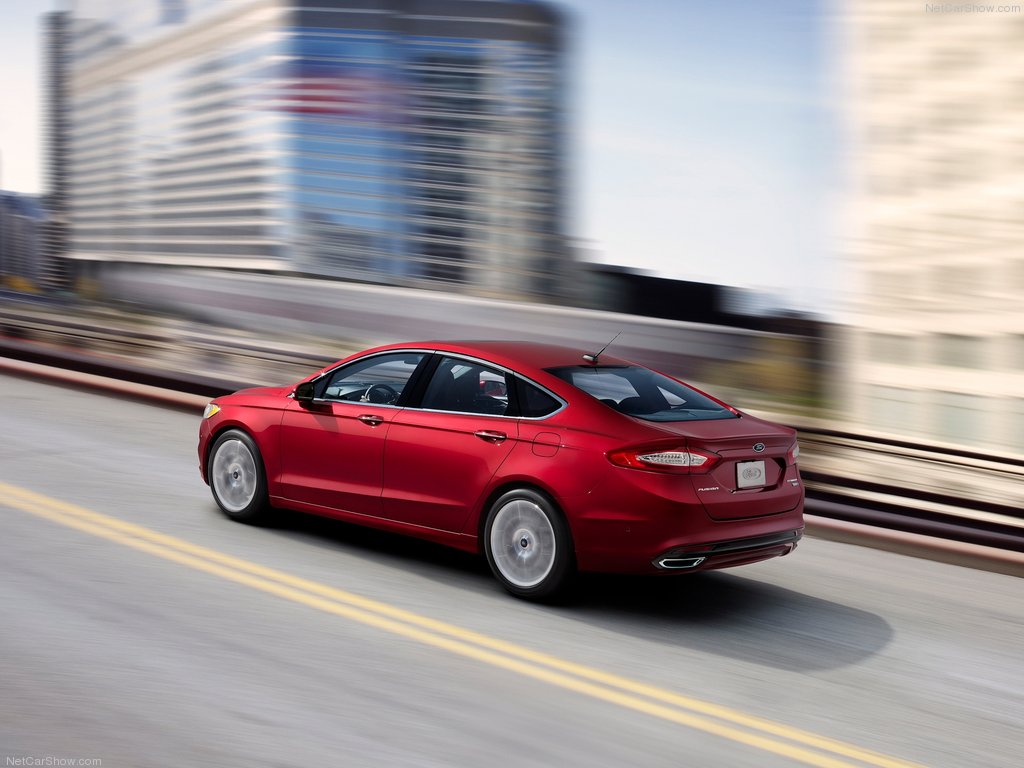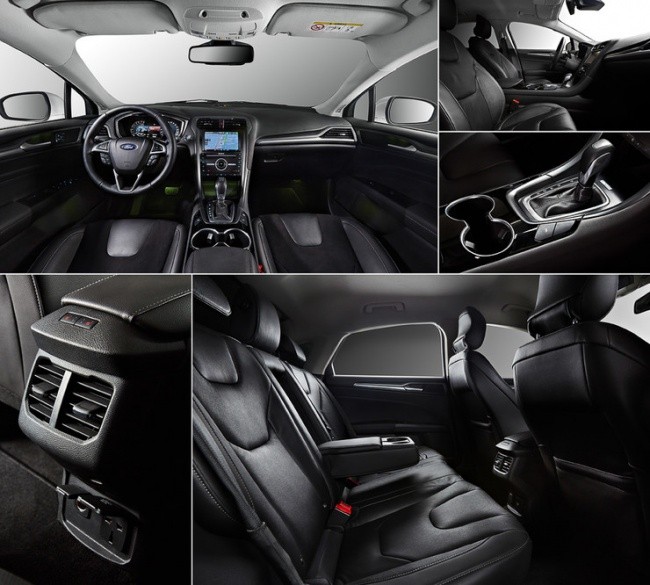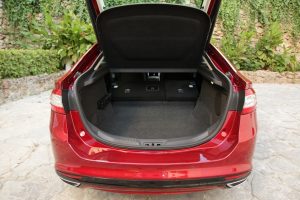D-segment is an extremely popular and demanding segment for cars, where competitors cannot be defeated by one or two successful design solutions.
No matter how much charisma a car has, it won’t gain recognition without perfection in every detail. This is why many connoisseurs of quality cars just fell in love with the fifth generation Ford Mondeo (the model is called Fusion in the USA), which has more than 20 years of experience behind it.

The respected American magazine MotorWeek named Ford Fusion the best family sedan. Surely, designers played no small part in winning this title, as the car turned out incredibly stylish.
The predatory squint of LED headlights makes the maw of Ford Fusion truly unforgettable.

The headlamp group of the Ford Fusion is worth a detailed description. LED headlights with six modes adjust to the speed and direction of the car. Sometimes it seems that they read the driver’s mind.
If you disregard the cutting edge headlamp group, the fifth generation Fusion is very similar to its predecessor. The graceful windshield morphs smoothly into the roof resting on the raised hull with a barely noticeable curve. Key changes concerned the aerodynamic specifications of the car: thanks to the new shields on the bottom and streamlined mirrors, the aerodynamic drag coefficient of the body decreased by 10% compared to the predecessor. In turn, noise insulation improved by 8%.
The highlight of the versions featuring Ecoboost turbocharged engines is chrome-plated muffler outlets that protrude from under the rear bumper. Engines will be covered at length later on, because they deserve a special attention.
SEDAN WITH BUILT-IN COMFORT TECHNOLOGY
You should not be surprised by our decision to write about the engine last. Believe us, this is not accidental! Latest information is always best remembered, and state-of-the-art Ford Fusion engines are something worth remembering.

Any owner of the Ford Fusion with a 2-litre engine will be stoked to hear a specially tuned exhaust resonator: during intense acceleration, it will generate a special “racetrack roar” in the cabin.
Those who want to install an autogas system on their car will be happy with the time-tested naturally aspirated engine with a volume of 2.5 litres (coming only with the simplest configuration). However, its behaviour, of course, will not be as perky as that of its turbocharged peers.
Music lovers will love the premium Sony audio system with 12 speakers.

ENGINE
You should not be surprised by our decision to write about the engine last. Believe us, this is not accidental! Latest information is always best remembered, and state-of-the-art Ford Fusion engines are something worth remembering.
Our customers largely prefer turbocharged Ecoboost petrol engines with a capacity of 1.5 litres (160 hp) and 2 litres (203 hp and 240 hp). They show excellent traction throughout the operating range and enable the driver to enjoy an active driving style. For example, the 1.5-litre engine produces 240 Nm of torque in the range of 1,500 to 4,500 rpm (with a fuel consumption of 6.8 l per 100 km in the combined cycle). Thus, you will have a great acceleration potential that you can unlock with you right foot at any time. The only thing is you should never lug Ecoboost engines by keeping very low revs – you can do this to diesels, but not to turbocharged petrol engines.
Any owner of the Ford Fusion with a 2-litre engine will be stoked to hear a specially tuned exhaust resonator: during intense acceleration, it will generate a special “racetrack roar” in the cabin.
Those who want to install an autogas system on their car will be happy with the time-tested naturally aspirated engine with a volume of 2.5 litres (coming only with the simplest configuration). However, its behaviour, of course, will not be as perky as that of its turbocharged peers.
Ford Fusion is also available in a hybrid version, which will be covered in a special entry.
SUMMARY
Definitely, Ford Fusion has many strong competitors: Toyota Camry, VW Passat, Honda Accord, etc. However, after analysing the advantages of competitors with a usual German meticulousness, Ford placed a bet on a versatile formula: bright appearance + excellent chassis + powerful engine. The result was a car with an attitude and intelligence!

